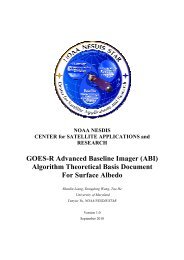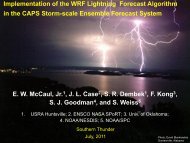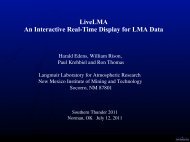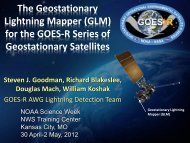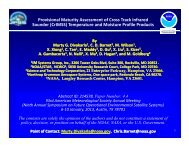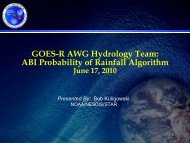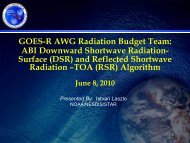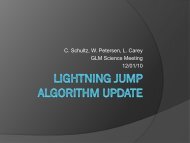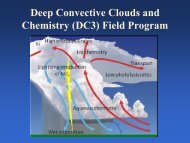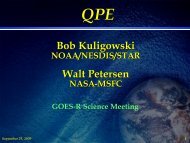GOES-R MANAGEMENT CONTROL PLAN (MCP)
GOES-R MANAGEMENT CONTROL PLAN (MCP)
GOES-R MANAGEMENT CONTROL PLAN (MCP)
Create successful ePaper yourself
Turn your PDF publications into a flip-book with our unique Google optimized e-Paper software.
• Retain copies of the Inventory Report to the <strong>GOES</strong>-R/NESDIS for all NOAA Government-<br />
Furnished Equipment and all NOAA Contractor- Acquired Property purchased with <strong>GOES</strong>-<br />
R/NESDIS funds<br />
• Ensure that proper disposal procedures are followed in accordance with the FAR<br />
5.6 Waiver Approval Authority<br />
Waivers to the <strong>GOES</strong>-R <strong>MCP</strong> may be granted with the approval of both the NESDIS AA and the GSFC<br />
Center Director. In case the NESDIS AA and GSFC Director disagree on waiver approval, the request<br />
may be elevated to the Deputy Under Secretary for Oceans and Atmosphere.<br />
6 SYSTEMS ENGINEERING <strong>MANAGEMENT</strong><br />
The <strong>GOES</strong>-R Program Systems Engineering Management Plan (SEMP) P417-R-PLN-0025 defines the<br />
technical approach to managing and executing mission systems engineering throughout the life cycle of<br />
the <strong>GOES</strong>-R program. This represents the full end-to-end system – from capture of energy irradiating on<br />
the space borne instruments to final product distribution. In addition to the Program SEMP, the Flight<br />
Project and Ground Segment Project have developed SEMPs to cover their respective Systems<br />
Engineering segment responsibilities.<br />
The <strong>GOES</strong>-R systems engineering team is staffed with both NASA and NOAA personnel with<br />
institutional system engineering oversight provided by the Applied Engineering and Technology<br />
Directorate, GSFC. As NESDIS builds its own competencies and capabilities for systems engineering,<br />
this oversight will transition to NESDIS.<br />
The <strong>GOES</strong>-R End-to-End System will become a seamless integration of the Space Segment and the<br />
Ground Segment, which will generate and distribute products to the end users and to the NOAA archive<br />
and retrieval system, CLASS. <strong>GOES</strong>-R is a system which is being provided by multiple contractors.<br />
Most interfaces between the major subsystems as well as with the Users are bi-directional and interactive.<br />
The system must ensure that these sub-systems work together while meeting the stringent performance<br />
and reliability requirements. The Program Systems Engineering Office (PSEO) has been established to<br />
ensure these interfaces are properly designed and implemented. Further, a series of “end-to-end” tests<br />
will be conducted as the system is integrated to ensure that all operational and contingency modes<br />
perform and meet the Mission Requirements. Actual flight and operational ground system hardware and<br />
software will be used for much of this testing. Independent analysis of the designs and relevant special<br />
tests will be performed when functional and performance testing is not feasible. System level testing<br />
activities will extend through the launch and checkout of the first satellite to ensure the system operates<br />
reliably and as efficiently as possible.<br />
6.1 Requirements Management<br />
The NOAA Executive Panel and NOAA Executive Council have delegated approval authority to the<br />
Deputy Under Secretary for the user requirements or Level I requirements, which are the basis for the<br />
<strong>GOES</strong>-R series system acquisition.<br />
The NOAA Observing System Council is the program requirements validation body. The NOSC, along<br />
with the NOAA PMC are the advisory bodies to the Under Secretary for NOAA's Earth observation and<br />
environmental observation-related data management (end-to-end collection, processing, storage,<br />
archiving, accessing, and disseminating) activities.<br />
Page 53 of 75




